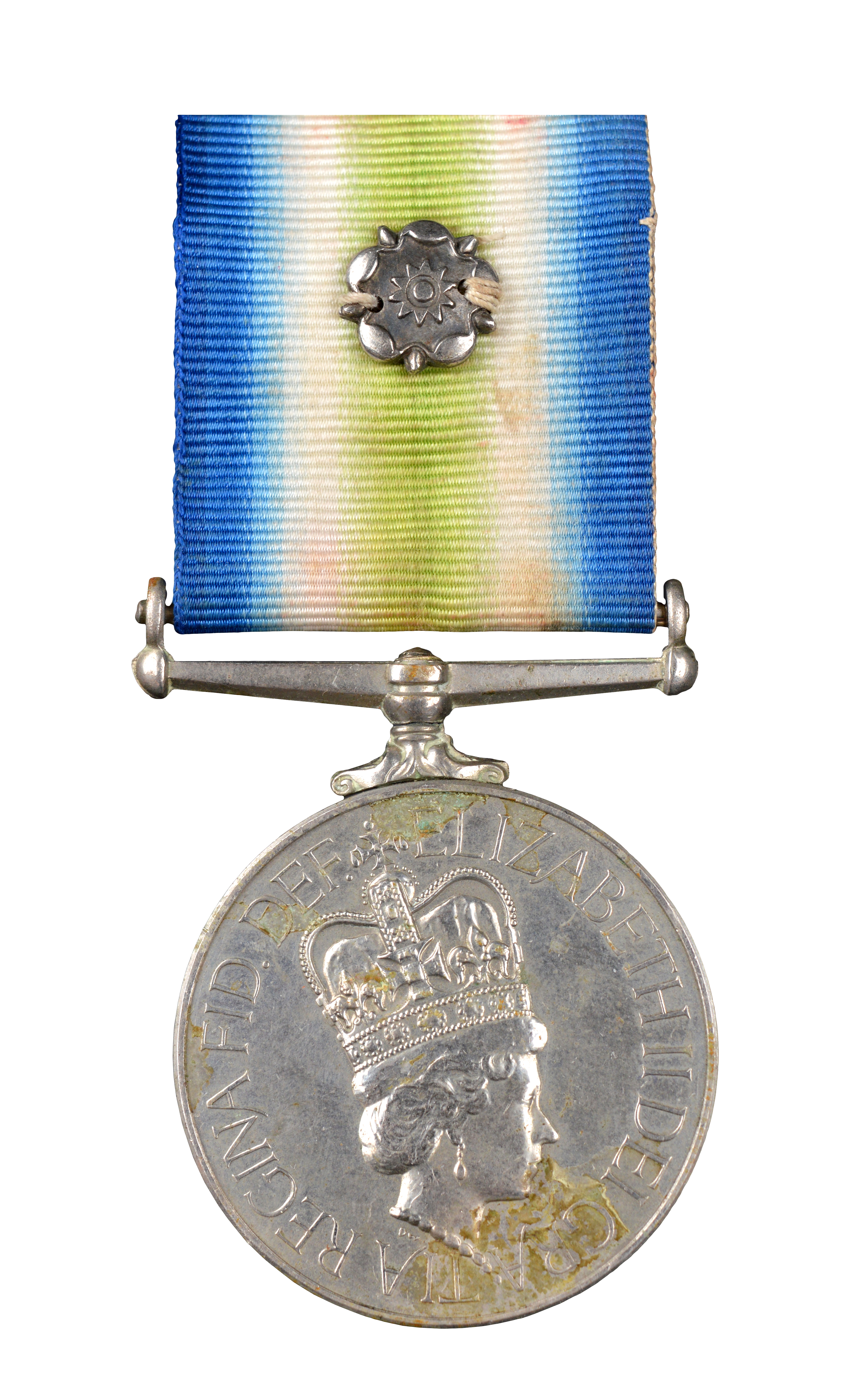Medals & Coins, Arms & Armour - 1st May 2019
Lot 514
By order of the recipient
Estimate £1,000 - £2,000 | Hammer £1900
+ Buyers Premium
Description

By order of the recipient, the Operation Paraquet and Santa Fe incident South Atlantic Medal to Lance Corporal Jeremy 'Rocky' Rowe, Royal Marines, with rosette (LCPL J M ROWE PO35967J RM), good very fine.
Born 1959 in Scarborough, Rowe endured a violent upbringing at the hands of his father (himself a Royal Marine veteran) and was further inured to hardship when he left home to join the Grimsby trawler fleet in the freezing waters of the North Atlantic cod fisheries. He witnessed the final stages of the notorious ‘Cod Wars’ with Iceland, which left him looking for alternative employment.
He recalls that the Royal Marines Recruiting Officer who enlisted him in 1976 declared that he had shared a landing craft with Rowe’s father at Dieppe in WWII. He recalls with some bemusement his involvement in the ‘Coconut War’, when a force of Marines helped to oversee the tumultuous progression to independence of the islands of the New Hebrides. By the time of the Falklands War in 1982 he was section sniper in the Reconnaissance Section of 42 Commando Royal Marines.
The first retaliatory action of the British Forces against Argentina was the reconquest of South Georgia - Operation Paraquet. After an abortive attempt to insert an SAS team on the Fortuna Glacier, the British detected the Argentine submarine Santa Fe leaving the port of Grytviken. A swift aerial attack caused critical damage to Santa Fe and precipitated a direct British assault.
The main force tasked with the re-conquest, M company of 42 Commando RM, was still at sea on the tanker Tidespring, and so a scratch force, including Rocky Rowe, was rushed ashore from the vessels in the vicinity of Grytviken. Opposition was overwhelmed by the vigour of the assault and the Argentine surrender was accepted at 17:15 GMT 25th April.
This left the British presiding over a volatile situation. There appear to have been large quantities of firearms and ammunition, which the British were hard pressed to secure. 140 prisoners were confined at the BAS headquarters, and their guards had been briefed, in the event of an insurrection, to shoot to kill.
At this point Marines and Naval personnel took control of Santa Fe in circumstances that differ in the various accounts. The standard history indicates that she was required to be propelled clear of the critical jetty at King Edward’s Point. Rowe himself recounts boarding Santa Fe at sea, via helicopter, together with the celebrated SAS Captain Gavin Hamilton (later M.C., and for whom Rowe wishes his admiration to be recorded), and others. Rowe was assigned to the lower control room to supervise and Argentine Petty Officer, Felix Artuso.
The Marines had been tasked with preventing the crew from scuttling the Santa Fe, taking control of it by force, or attempting to launch a torpedo at HMS Antrim. Rowe was unfamiliar with the controls of a submarine and sought the advice of a Royal Naval officer, who identified certain levers which if manipulated would send the vessel to the bottom. Artuso was warned off the levers using sign language, which he seemed to understand.
In the moments that followed responsibility for the fate of the submarine appeared to Rowe to devolve upon him. Artuso received an intercom message in Spanish from his own officers which prompted him to make a sudden dash for the forbidden levers. Rowe could only interpret this as an attempt at sabotage which imperilled all on board. He was conditioned, by his training, his appreciation of the circumstances, and by the Rules of Engagement as embodied in the recent briefing, to act decisively; and so he shot Artuso, fatally, with his Browning pistol.
Convinced that the Santa Fe was now sinking, Rose raced on deck and attempted to alert the men on shore by discharging his weapon into the air. It soon became apparent that a tragic error had been made by the Naval officer. The levers that Rowe fired in defence of were entirely benign in their effect – Felix Artuso had been attempting to adjust the trim of the submarine.
A board of enquiry cleared Rowe of any wrongdoing and he went on to take part in the ejection of the Argentines from South Thule.
Sources:
Lawrence Freedman, ‘The Official History of the Falklands Campaign’
Martin Middlebrook, ‘The Falklands War’
Commander Task Group 317.9, ‘Report of the inquiry into the death of Argentine prisoner of war Suboficial Primero Felix Artuso‘
David Yates, ‘Bomb Alley’
The Record Books and Personal Testament of Lance Corporal Jeremy Rowe.